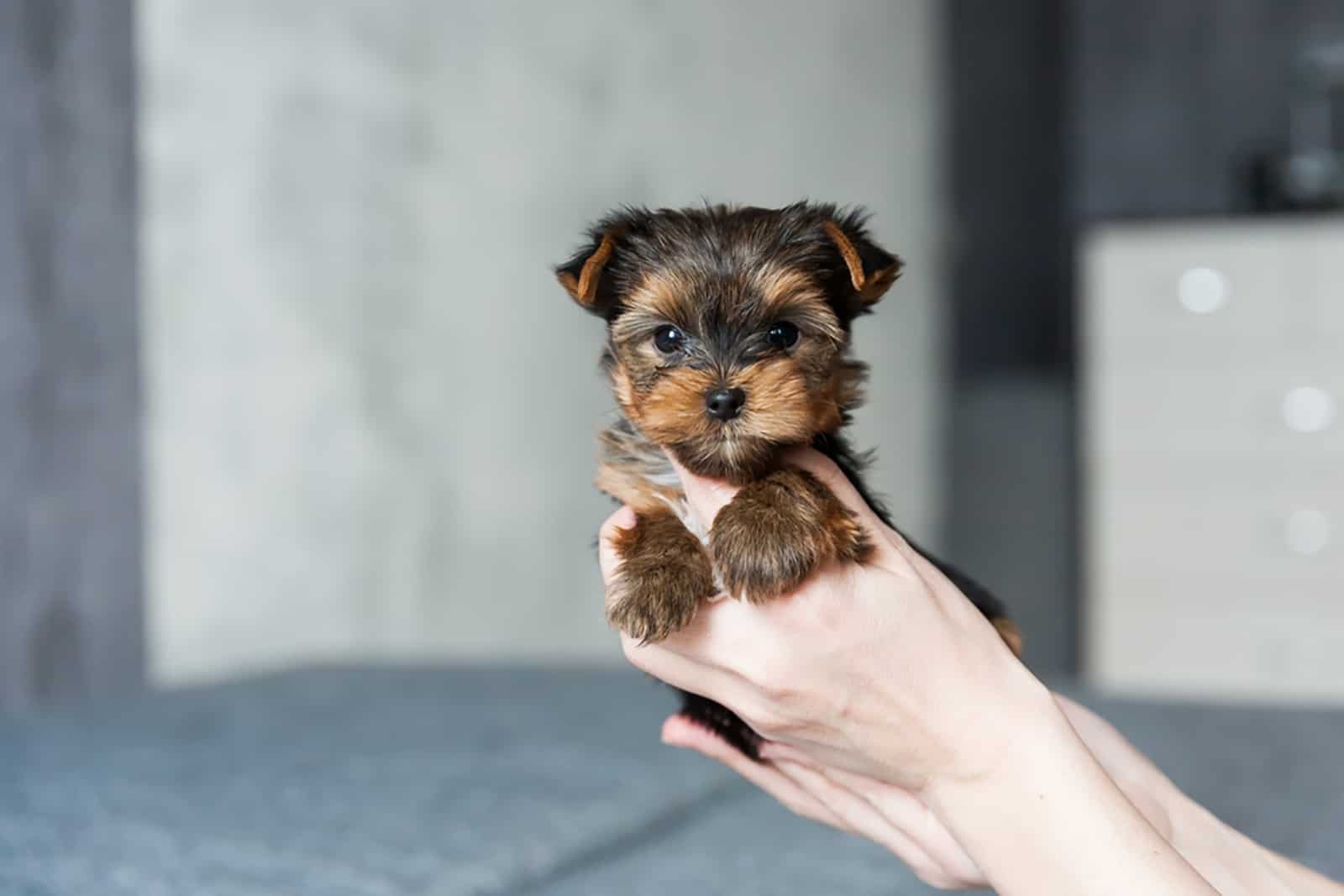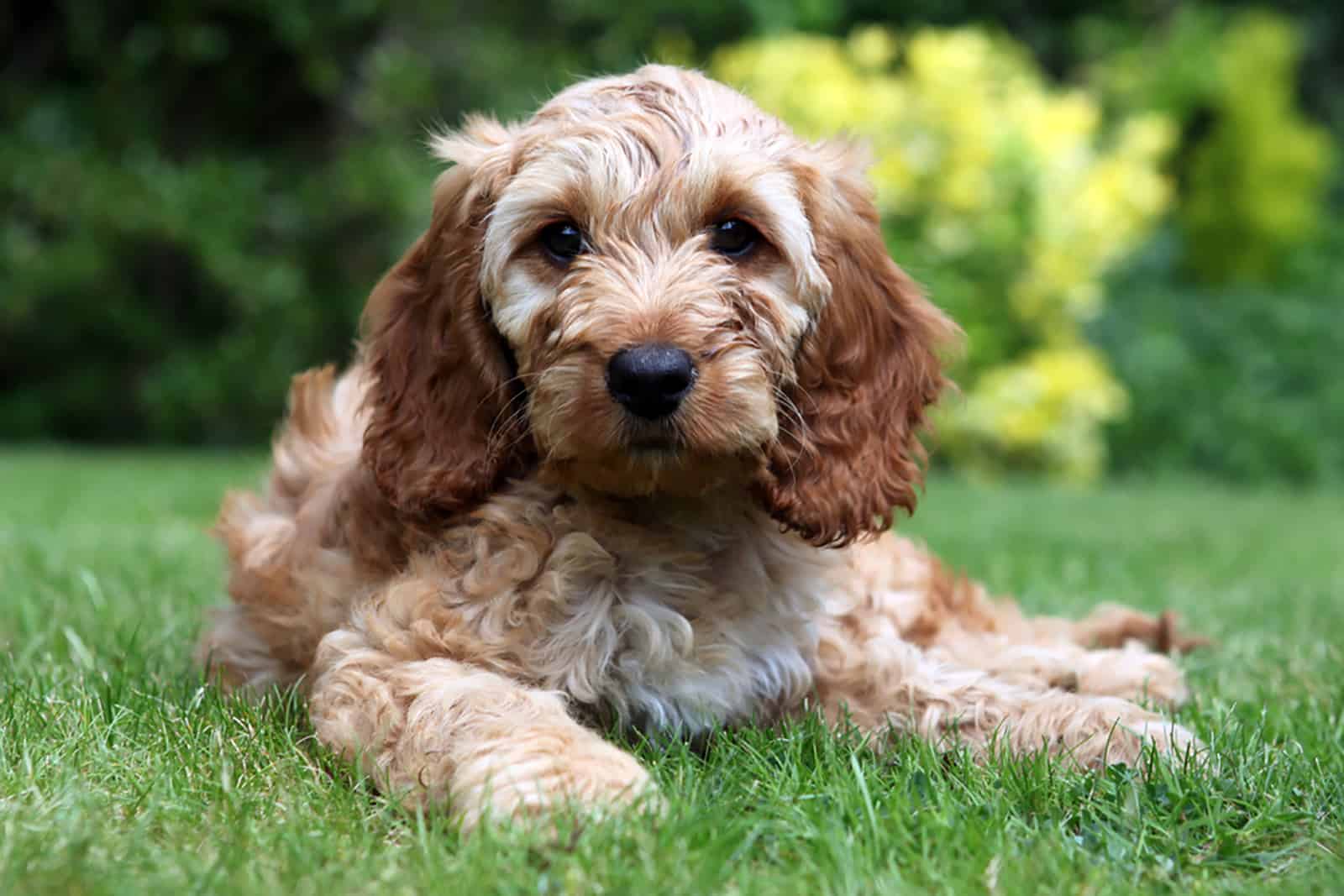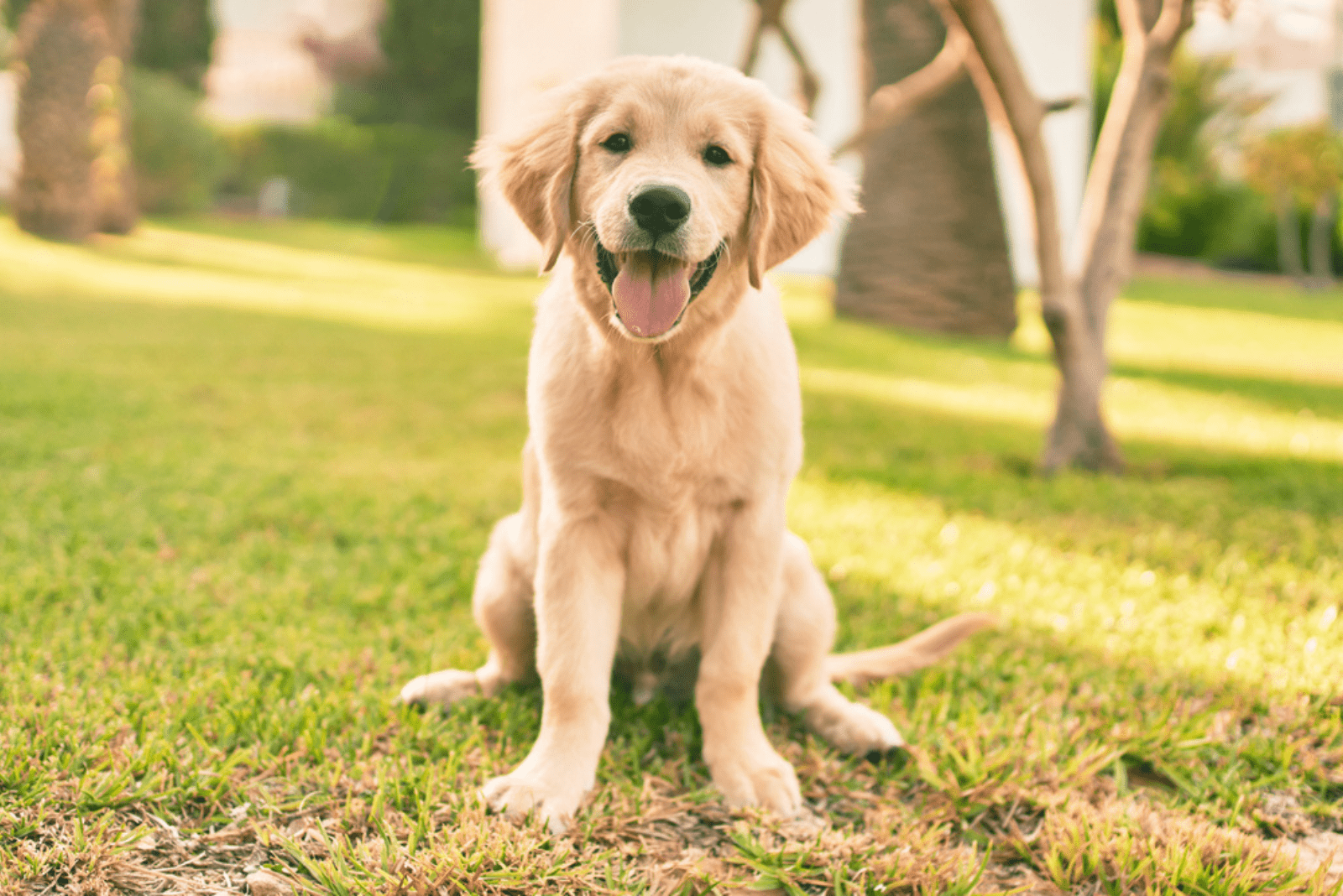Say ‘Mexico’ and I immediately get in the mood to put on a Sombrero, take a few tequila shots, and with a Mojito, head myself to some sandy beach. But, unfortunately, I am in my apartment under the air conditioner, and currently, the only connection with Mexico is hot weather.
But, there is one more thing that occurs to me when I think of Mexico, and that is Mexican dog breeds. How many do you know? I can think of six.
Some of them are more known, others are less known. They are all being raised in these hot climates, and you can tell they are saucy and spicy. But, it can all be controlled with proper training and early socialization.
Yes, we are dealing with a few bulldogs, pitbulls, and wolfdogs in the background, and it may seem intimidating, but I promise that those are all fine breeds that you just have to meet! Bring your taco and tequila, and let’s take a hot ride!
6 Mexican Dog Breeds
1. Chihuahua
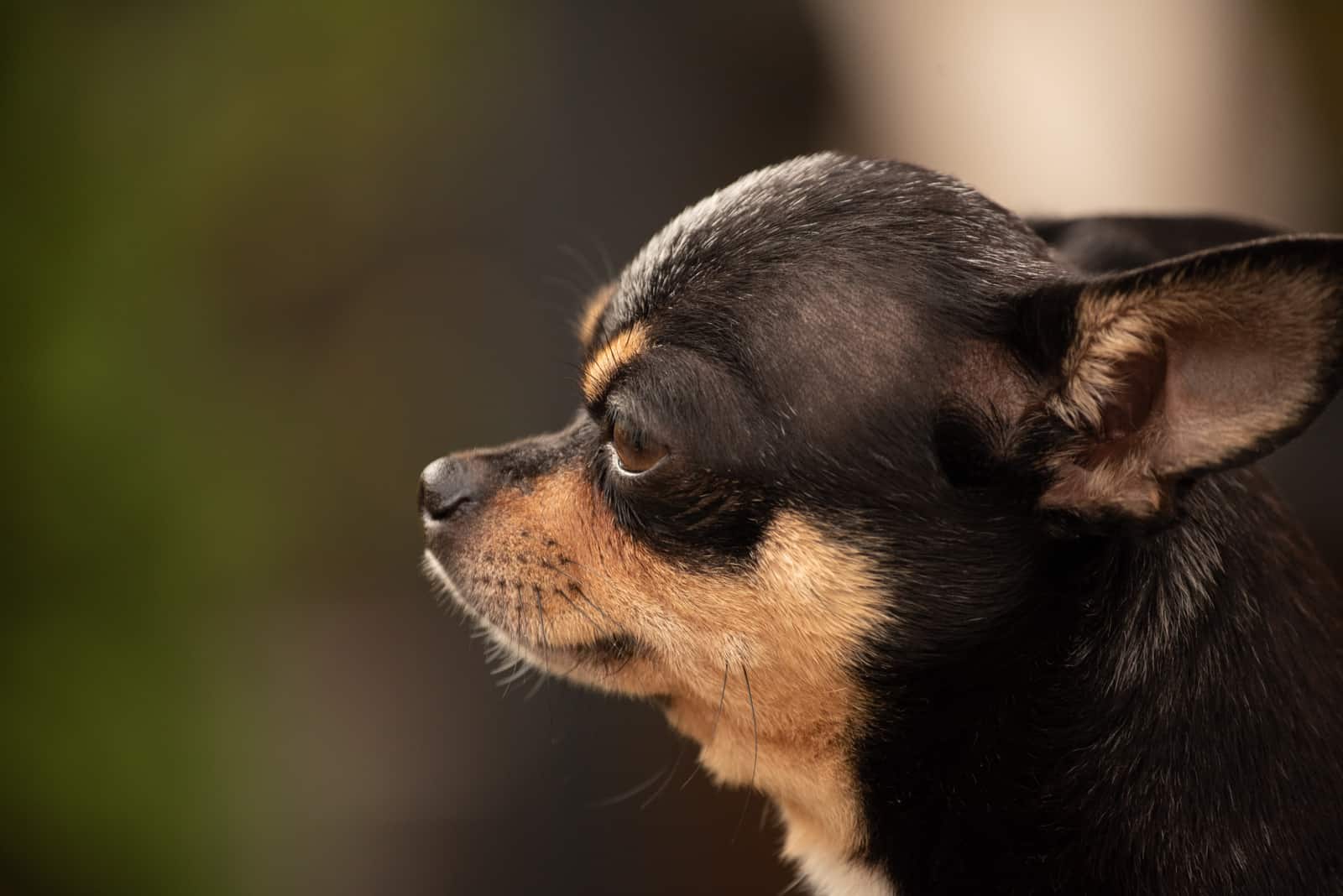
The first dog on our list is probably the best known and most popular of all the Mexican dog breeds. At some point, it was also called the Texan and Arizonian breed until finally, someone returned his true citizenship to him.
Many people associate Chihuahuas with aggression, so they avoid contact with them. Well, maybe it is better that way. Considering how adorable they are, someone would constantly be petting their head, and Chihuahuas don’t allow that kind of behavior.
Sometimes, it looks funny how people get scared of such a small dog, so it is probably best to get your Chihuahua collar and harness to avoid inconvenience.
If you are about to get yourself this companion dog, then the first step is to search Chihuahua prices, both for purchasing and maintaining, and to find reputable Chihuahua breeders.
Origin
Everybody knows that Chihuahuas are native Mexican dogs. They have the status of the official national symbol of the state. But, what lies beneath? This is a breed that is many centuries old, and there is an interesting story hiding behind it.
Recent studies have shown that the DNA of Chihuahuas resembles those of ancient dogs from the time before “America was discovered”. Those dogs were called Techichi.
They were living with the native civilization in Mesoamerica. They had a sacred status in society, and a key role by the death bed of a dying person.
Rich people could afford Techichi in order to cremate one with a decedent so that the dog would carry his sins and escort him to the underworld, fighting with evil spirits along the way.
Today, the Chihuahua got its name after Mexico’s biggest region and its capital city of the same name. But, the story does not end here.
Some researchers say that it is actually a product of crossbreeding the Techichi and the Chinese Crested Dog, or even the Maltese.
Features
Chihuahuas are both recognized by the American Kennel Club and by the FCI standard by the No, 218. There is the Chihuahua Club of America that has been working hard to preserve the love for this breed since 1923.
Lifespan: Chihuahuas are expected to live from 14 to 16 years, which is a fine lifespan, but even the longest Chihuahua lifespan is a short period to spend with your favorite pooch.
Size: This dog will not get much bigger as an adult, compared to the baby version. You can check this in the Chihuahua growth chart.
His height is approximately between five and eight inches on average. There are also Teacup Chihuahuas, but they are such small little things that you can imagine something smaller than a regular one.
Weight: Since the height of a Chihuahua is not enormous, you can expect that its weight will be accordingly. Chihuahuas usually reach a maximal six pounds unless it is an overweight Chihuahua.
Hair: There are two types of these family dogs when it comes to coat type. There is a short-coated and a long-coated Chihuahua, and both Chihuahua coat types shed moderately depending on the season.The short coat has hair that is smooth and floating around the body, while the long coat is a bit thicker and more fluffy. They are both with undercoats that are protected from the harsh weather. Yes, even in Mexico, nights can be cold.
Colors: There is a full range of coat colors that are recognized as a breed standard by the AKC. There is a blue Chihuahua, a chocolate, a cream, a fawn, a cream and white, a red, a silver, a white Chihuahua, a silver and white, a gold, a merle Chihuahua, a chocolate sabled, and a few more.
Health: These sweethearts are usually healthy pooches, but there are a few genetic issues they encounter. Their little heart can catch a few illnesses as well as their little eyes and legs.
It sometimes happens that your little dog faints. That is a side effect of idiopathic epilepsy that is symptomatic for this breed.
Personality: A Chihuahua is often perceived as an aggressive dog, but their owners say otherwise. They describe their small dogs as utterly loyal, loveable pups, with both charm and attitude. There are a few small differences between male and female Chihuahuas.
More Interesting Facts
Have you ever heard of the term “clannish”? Well… me neither, and it is no surprise because it is specific to this breed only. Clannish means that a dog prefers his own breed and not others.
Something like “Mean girls” in the movie. Only Chihuahuas show this behavior in the dog world.
Among Mexican dog breeds, only the Chihuahua has a “soft spot”. No… not their tummy, even though it is soft and fluffy – that is not what I meant. It is a molera or a gap between cranial bones that closes as the Chihuahua grows older.
Have you ever heard that a dog can heal your asthma or allergy? Apparently, that is what Chihuahuas do, but that has not been proven. But, some people so firmly believe it that maybe it actually helps them.
This is one of the Mexican dog breeds that has a sports team named after it. It is the El Paso Chihuahuas, a baseball team that wanted to differentiate themselves from the El Paso Padres. Their mascot is, of course, a Chihuahua.
Did you know that there are wild Chihuahuas wandering around the south of the U.S.? And, they used to be in packs!? It is funny to imagine such a sight, but I believe I wouldn’t be laughing if I encountered them.
2. Xoloitzcuintle
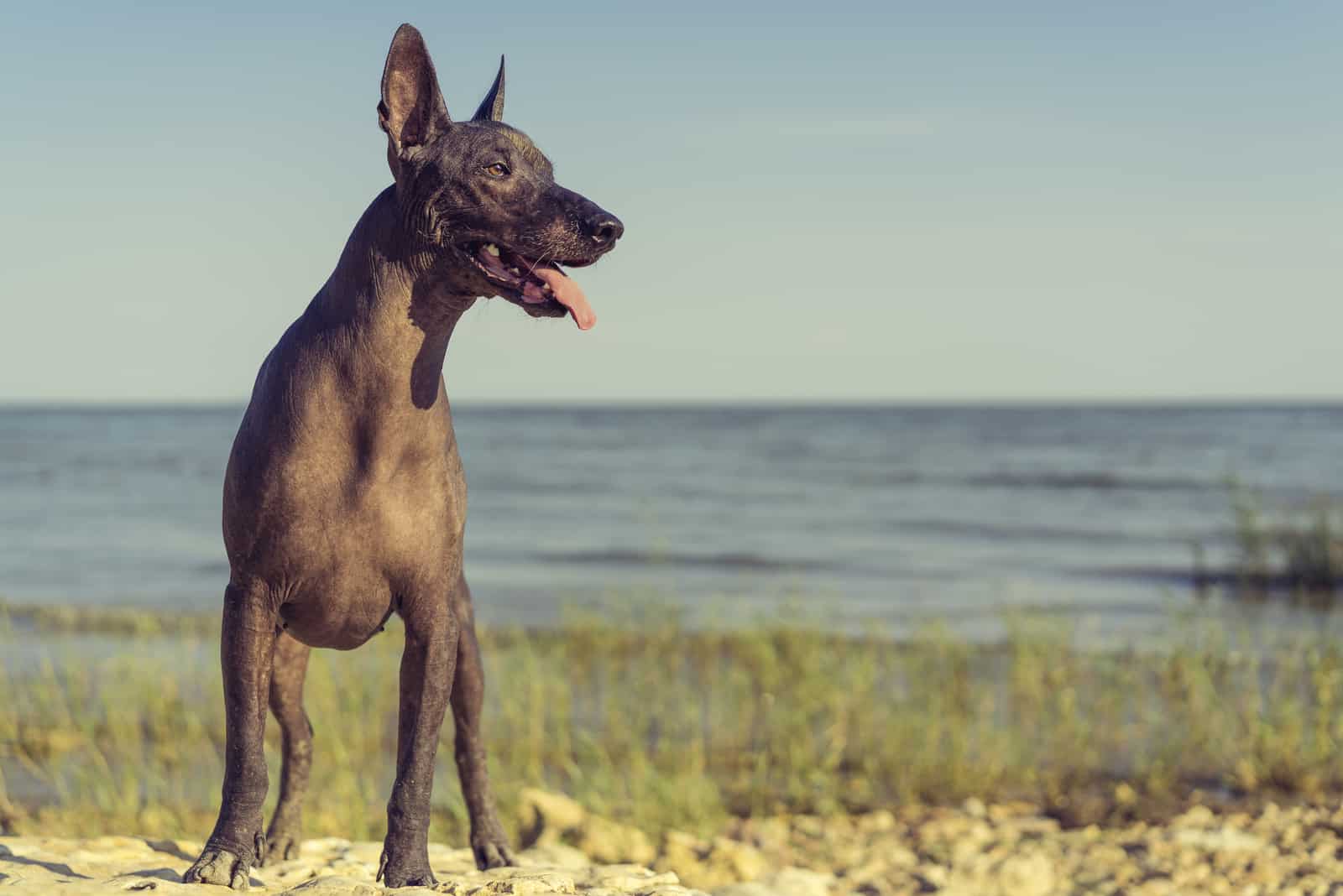
The Xoloitzcuintle, or in the original writing Xōlōitzcuintli, is also known as a Mexican Hairless Dog. Maybe you are wondering how to pronounce this unusual name. It is something like Show-Low-Itz-Queent-Lee. Well, that is helpful, I think.
But, let’s just stick with the Xolo (or Show-Low) if you did not memorize it. That is his nickname in his native land. The Xoloitzcuintle is one of a kind among the officially recognized breeds because it is the only dog whose name starts with the letter X. He often ends up on weird dog breeds lists!
Origin
Both the origin of his name and the origin of this breed is connected with the Ancient Aztec civilization. He got his name after a deity, actually… an Aztec god of twins, fire, bad luck, and lightning, and escorted souls into the underworld.
The name of that god was Xolotl, and he was tightly connected with our little dog. Itzcuintli, as you can guess, is a dog in Aztec language. This god is often pictured with the head of the dog – and which other than our Xolo.
There is a belief that dogs are unclean creatures with all bad features. But, we do not think that our dog is bad luck or unclean. He gives us a lot of joy, and hey – he will not be unclean if you regularly bathe him!
I believe that you now want to get yourself this dog, and if you have made up your mind to have one, make sure you find the right Xoloitzcuintle breeder. This first step is most important when it comes to lifetime happiness.
Features
The Xoloitzcuintle dog is officially recognized by the American Kennel Club, with a registered ideal breed standard. It is also recognized by the Federation Cynologique Internationale under No. 234. There is even a Xoloitzcuintli Club of America that is working hard on improving and preserving the breed, and gathers reputable breeders.
Lifespan: Dog owners who are lucky to have this ancient breed can be relieved – the Xolo has a fairly long lifespan. Studies say that this breed averagely lives from 13 to 18 years.
Size: Xolo comes in three different sizes (like Poodles, for example). There is the standard Xoloitzcuintle that reaches 18 to 23 inches. There is the miniature Xoloitzcuintle that reaches 14 to 18 inches, and there is the toy Xoloitzcuintle that reaches 10 to 14 inches.
Weight: The standard Xolo can weigh from 30 to 55 pounds, the miniature Xolo can weigh from 15 to 30 pounds, while the toy Xolo can weigh from 10 to 15 pounds.
Hair: It is nominally a hairless breed, but it can actually come in two variations. There is a hairless variety that is more prone to skin conditions. This sensitive breed has some special needs when it comes to skincare.
Make sure you moisturize his skin, and put on sunscreen so he does not get burned. And, yes… he is like a teenager – acne could occur on his skin.
Some say it is a hypoallergenic breed. The variation with hair has an interesting hairstyle that makes him look like a mohawk.
Colors: This breed of dog comes in a variety of colors. There is the whole spectrum of shades from dark to light. You can find brindle, fawn, bronze, merle, tan, red, white, black, palomino, slate, gray, liver, dark brown, black and white, white and black, dark brown and black, and white and tan.
Health: The even-coated variety is suitable for people with asthma and allergies.
Personality: These dogs are known to be excellent with kids since they are small and playful. They are easy to train, and they show great loyalty to their master. That is why sometimes they are alert to strangers – almost like a small guard dog.
More Interesting Facts
The Xolo returned to its divine status back in the 20th century, when a couple of famous painters,
Frida Khalo and Diego Rivera, started to picture this breed in their paintings.
There is even a soccer team in Tijuana that is named after this breed, and the Xolo is their trademark.
It is believed that the Xolo derived from the Mexican hairless dog that is still wandering in the depths of the Mexican jungles.
There are many supernatural powers and traits that are given to this dog, and one of them is the belief that it has the ability to heal people and to chase away evil spirits.
It is so interesting how his hairless body produces so much heat. That is probably the reason why some people think he has some magic powers. A fun fact is that they use him as a hot-water bottle when some part of the body is in pain. That is really an odd idea, I must say.
Maybe that is why Frida Khalo was so fond of this dog. I believe he was great consolation in the times of her serious pain, both within the body and the soul.
3. Chinese Crested Dog

I always associate the name of this dog with one of the dragon breeds from the Harry Potter series. Of course, these dragons do not exist, but the Chinese Crested Dog fortunately does.
The Chinese Crested had its peak of popularity at the end of the 19th century and in the beginning of the 20th century, right after the purebred dog was discovered.
Maybe the popularity of this dog is due to the fact that his hairy version looks like a powder puff brush. It is one pretty small, fluffy dog.
Origin
One might think that if something is called a Chinese Crested Dog, it must originate from China. But, it is actually not likely that this extravagant looking dog is made in China.
There is no scientific proof of that, and it is more likely that he originated from the hairless breeds of Mesoamerica, and then evolved into his own purebred dog breed.
Some say that he actually evolved from the hairless dogs of Africa, but none of this is actually verified.
Features
It is a breed that is recognized by the American Kennel Club, and it has a registered breed standard. It is also registered with the FCI under the Standard No. 288.
Lifespan: This bit of a strange looking creature will probably cuddle with you for 13 to 18 years.
Size: No amount of dog food will make this dog grow bigger than 11 to 13 inches in its adult stage.
Weight: If you overfeed it, it can weigh more than the average of 8 to 12 pounds, but then you will have an overweight dog.
Hair: There are two versions of this breed’s hair. It is the Powderpuff and the Hairless type. But still, you need to take care of this dog because its skin is more exposed to the sun and is prone to sunburns.
For the Powderpuff version, you should get a nice brush and do the brushing every day.
Colors: It seems to me that all the Mexican dog breeds come in so many colors. The same is with the Chinese Crested. There is apricot, brown, chocolate, white, black, slate , pink, palomino, cream, red, silver, and a few more.
This breed often ends up on lists of the most beautiful spotted dog breeds.
Health: This dog breed has a genetic predisposition to developing problems with sight, along with patellar luxation.
Personality: This attentive little pooch is the perfect companion dog that will develop great affection toward you.
More Interesting Facts
It is a dog that is ideal for cuddling while watching a movie marathon because it is not a dog that likes to get into action. It is a dog that is more of a couch potato, though it is able to show its abilities if it wants.
It is a dog that will literally fall in love with you, and then follow you wherever you go. This is, of course, if you manage to keep him from escaping before the ‘fall in love’ moment happens.
It is unbelievable how sneaky he is. If there is the smallest hole, he will find it and run away.
There are records that say that these dogs used to travel on Chinese ships to help sailors get rid of rats. That is how they got to Europe, and there, they ended up in courts and on paintings, too.
There was a Chinese Crested dog named Sam, which was pronounced as being the ugliest dog of the season 2003, 2004, and 2005.
4. Chamuco
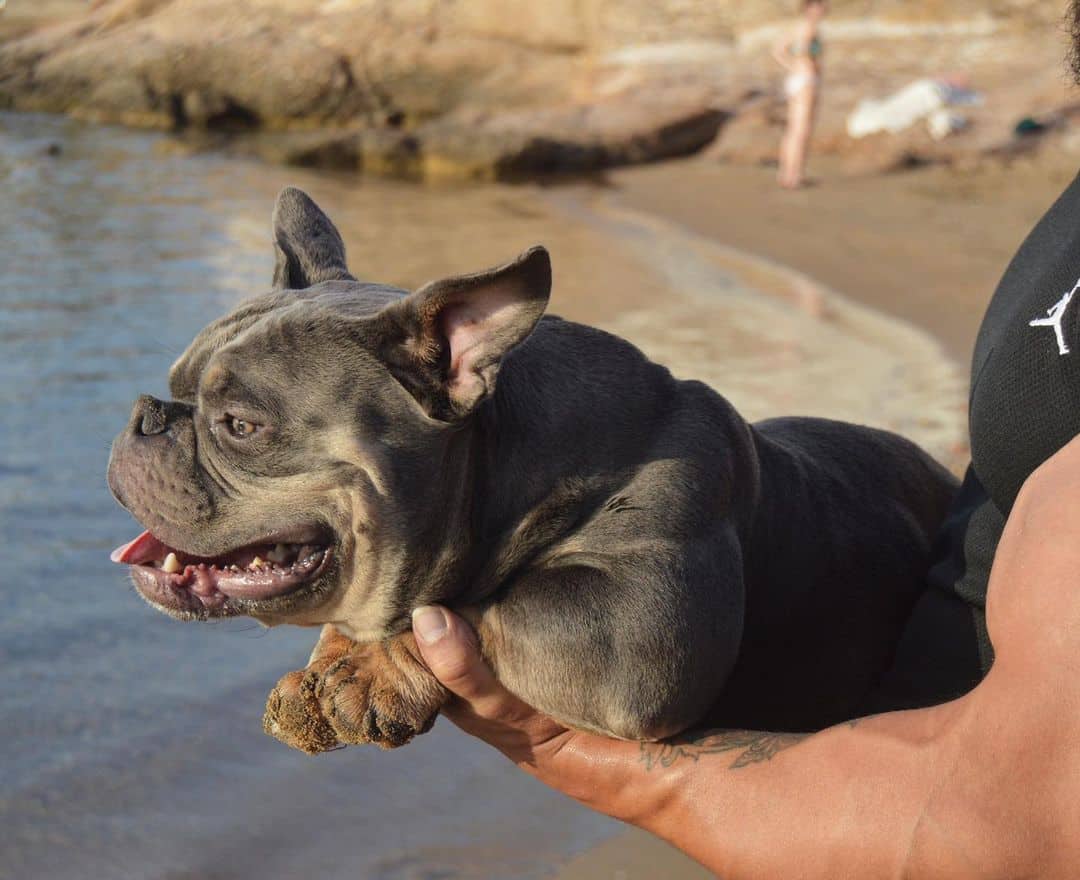
Photo from: @borjasaura
If you are wondering what this means, then you are probably not familiar with Spanish.
You probably won’t find this dog on a list of the typical types of Pitbulls. Do not expect to run into this dog because it is fairly rare. Even though there are a lot of dogs that look like Pitbulls, but are actually not, the Camucho is a Pitbull and a Mexican Pitbull.
Origin
Someone played with combining the genes of the Pit Bull Terrier, the PitBull Blue, the Staffordshire Bull Terrier, the American Staffordshire Terrier, the American Pit Bull, and maybe a Boxer and a Mexican Bully that no longer exists. That is how the Mexican Pitbull was created.
It is a breed that is shrouded in secrecy. Not much is known about it, even in Mexico probably because it is rare. This dog is used for obscure activities, such as dog fights.
Among Mexican dog breeds, this one has the “darkest” name of them all. Chamuco represents a dark and vicious creature – something like a devil. It is Mexican slang, and it got this name as reference to his temperament.
It is believed that the first appearance of this breed was in the 70s.
Features
If you are hoping to show your Chamuco in some conformation competition, I will have to disappoint you. This breed is not officially recognized yet, not even by The Canófila Federation Mexicana.
Lifespan: There is not enough information from which the average lifespan could be calculated.
Size: If you are wondering how big your Pitbull will be, ask no more. He will probably reach the size of 14 inches.
Weight: This fearsome Mexican dog can weigh from 25 to 40 pounds. If you do not know how many tacos you should feed your dog, check out this Pitbull feeding chart.
Hair: The Chamuco has short and smooth hair, but it still requires the best brush designed for Pitbulls to keep his coat healthy.
Colors: Since there is not much information on this mixed breed, the most common colors are black, brindle, and brown.
Health: There is not much information on specific illnesses that could occur in this breed. They are probably prone to the typical Pitbull problems. To keep him healthy, try to give your pooch the best dog food for Pitbulls, and take him regularly to the vet.
Personality: Since this breed is intentionally bred for fights, it can have intimidating looks and fearsome traits. It would be best to keep him in a harness that is suitable for Pitbulls while near other people. Some people even tend to train their pets with shock collars that are suitable for Pitbulls.
More Interesting Facts
The Chamuco is like a dog psychologist. It assesses people’s intentions very well, and that shapes him to be a watchdog of first class – not to mention that he is certainly a great guard dog.
Despite the fact that this dog is perceived as bloodthirsty, he is one sweetheart when it comes to taking part in children’s play or just hanging around with his human. But, do not leave him alone with kids, just in case.
5. Calupoh
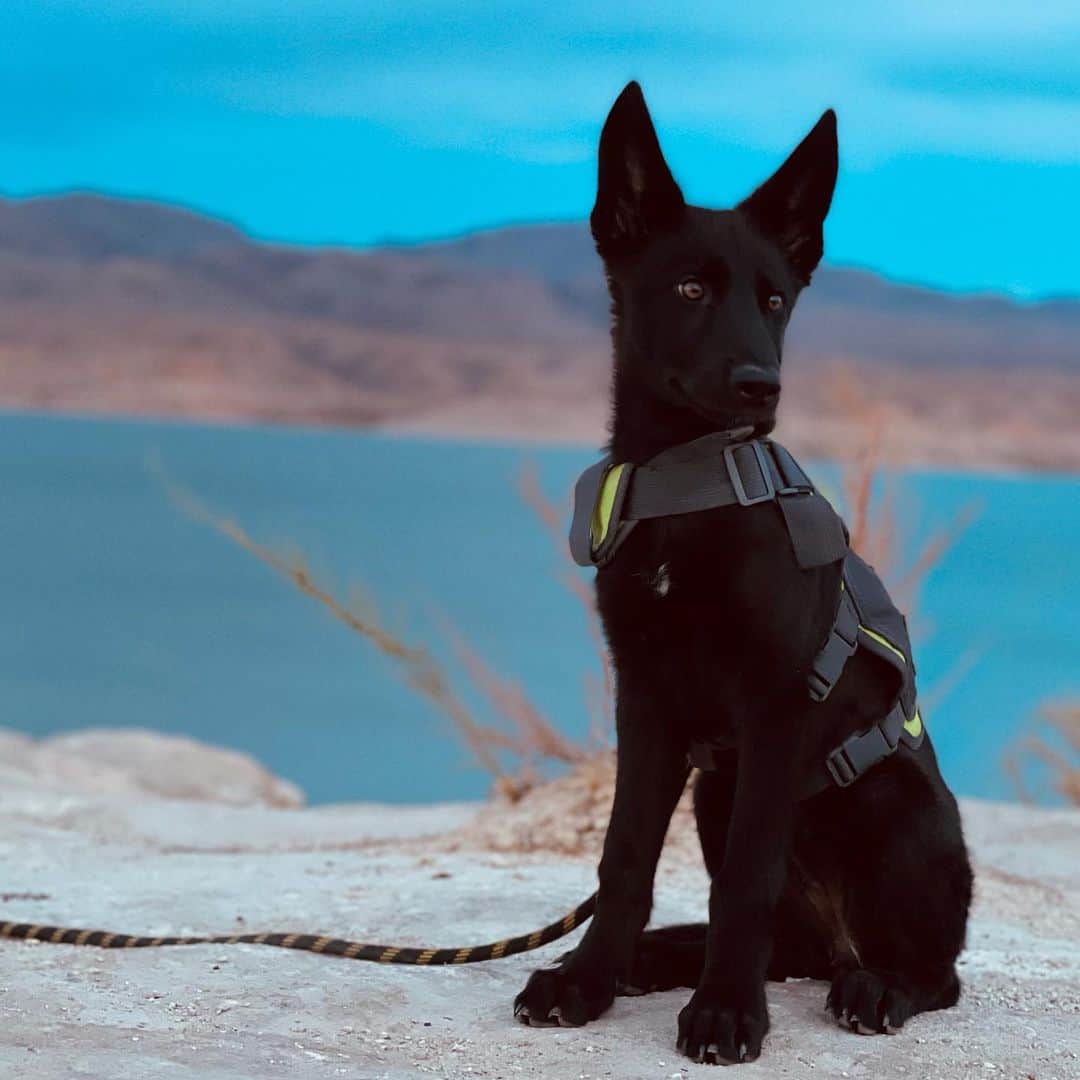
Photo from: @calupoh.lolha
The Calupoh’s other name is Mexican Wolfdog (or Perro Lobo Mexicano). At the time, there was big hype to “resurrect” this ancient native breed.
Wolfdogs are often perceived as scary, and sometimes they are “too much” for their owners, which is the reason why a lot of Wolfdogs end up in kill shelters. Among Mexican dog breeds, this is the only wolflike dog breed originally from this hot state.
Origin
This dog may have the most interesting origin. It is a product of the project that involved genetic manipulation of the DNA material of wolves and dogs.
This project had been going on from 1990 to 1999, and its aim was to rescue ancient domesticated dogs. They succeeded because the Federación Canófila Mexicana gave this breed the status of domesticated dog at the end of the last century.
The first record of this peculiar breed dates this dog in pre-columbian times. It is believed that it is a mix of dog and Mexican gray wolf.
Features
You will not find this breed on the lists of the FCI, the AKC, or some other Kennel Clubs outside Mexico.
Lifespan: It has a lifespan of the average wolfdog, and that is from 12 to 18 years.
Size: It will probably reach a size of somewhere between 24 and 30 inches.
Weight: It has an average weight of between 60 and 120 pounds.
Hair: Medium, double coat covers the muscled body.
Colors: Its fur can be gray, white, brown, or black.
Health: It can have issues with cataracts and arthritis.
Personality: This dog can tolerate other pets, and likes to be involved in all activities. It is a loyal and protective breed that has a bit of guarding instinct toward strangers.
More Interesting Facts
There are archeological artifacts of the dogs that have wolf traits, which are more than five centuries old. These remains were covered in some gold, and it is believed that this dog was used as an escort to the underworld for rich people.
Old Astecs believed these dogs were sacred, and they were usually sacrificed to the gods for fertility and luck. Both dogs and wolves have a very important role in the astrology of these ancient civilizations.
6. Mestizo
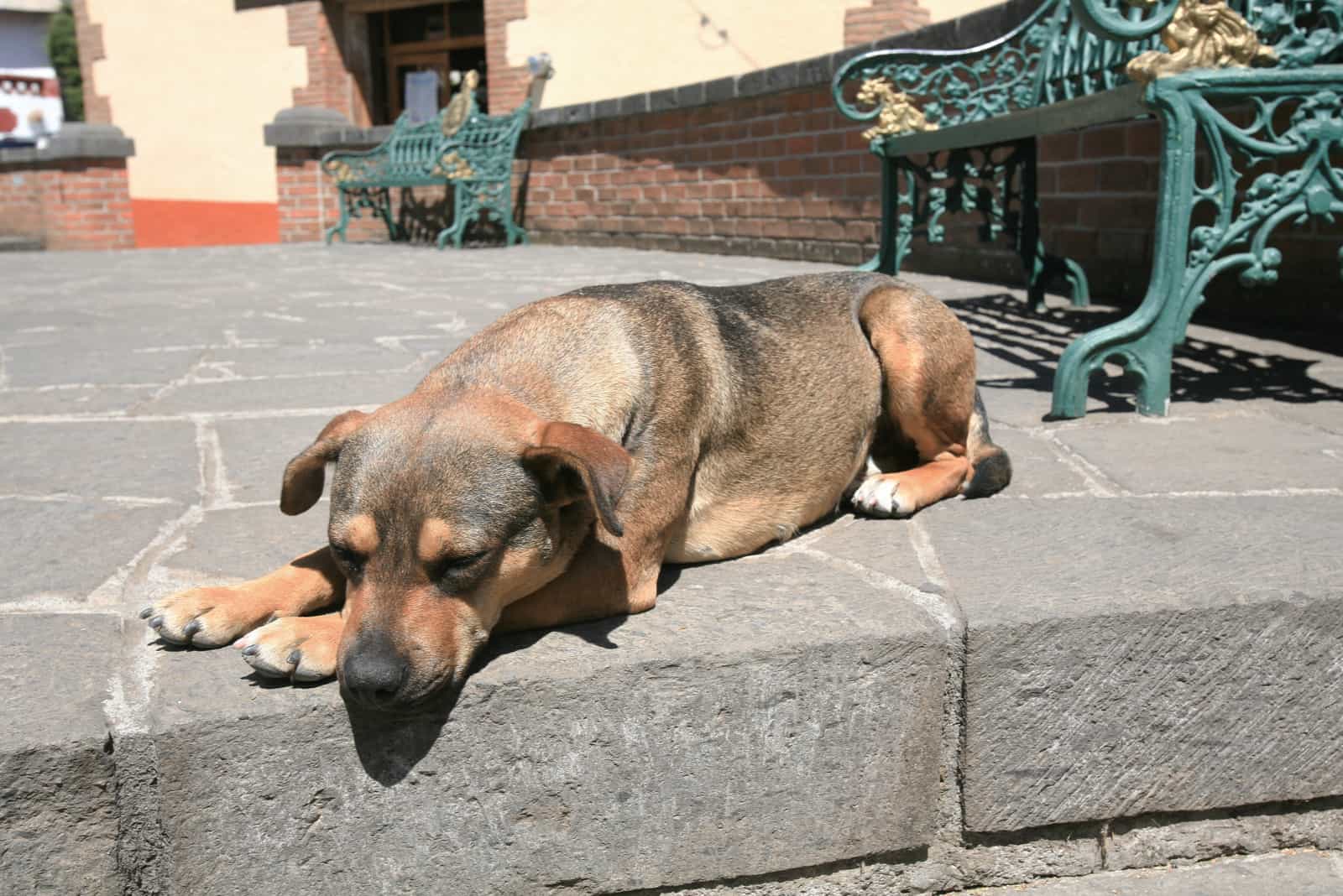
They are maybe not purebred dogs, but they are purely loved by the Mexican people. These dogs are my most beloved Mexican pets.
They are also referred to as Mexican Street Dogs.
Origin
When you take a look at its name, you can conclude it is a mixed breed. Mestizo means that in the languages of Latin origin.
It is also a term that was used for the people whose parents are of different races. There is an association for the term.
Parents of the Mestizo dogs can be purebred, and they can also be very elite in the dog world.
Features
We can’t talk about some general measures here because they depend on the parents’ measures. It is clear that this mixed breed is not recognized by the kennel clubs – only by the hearts of people who love this dog.
Lifespan: Its lifespan varies a lot, and it can depend on the health of the parent breeds.
Size: Its size will vary according to the size of the parent breeds, but they are usually small to medium.
Weight: Its weight will vary according to the weight of the parent breeds.
Hair: Its coat quality depends on the parent breed.
Colors: So does its color. It comes in the full range of colors.
Health: They are usually dogs that grow up on the streets, so they can be more prone to some common dog illnesses.
Personality: These dogs respond well to training that is based on rewards and positive reinforcement.
More Interesting Facts
A quarter of all pet dogs in this spicy country are Mestizos, and that is not an insignificant number.
These dogs often end up on the streets, and from there, they get rescued.
To Wrap It Up On Mexican Dog Breeds
The fiesta is over, and we have met six fine dog breeds that are as spicy and exciting as the country they come from. Mexican dog breeds are really something else.
You have probably noticed that these dogs are mostly small or even tiny. Why is that? I have no idea. Maybe they just like being so cute and adorable. But, even though they lack size, they don’t lack attitude.
All I know is that I am so glad that Mexico has enriched our lives with these adorable creatures. I believe that no person could resist their cuteness. Could you?
READ MORE:
24 Medium-Energy Dog Breeds That Might Be Suitable For You
14 Shaggy Dog Breeds Hiding Behind Those Curtains
Big Fluffy Dog Breeds: Big Dogs That Are Made For Cuddling!

